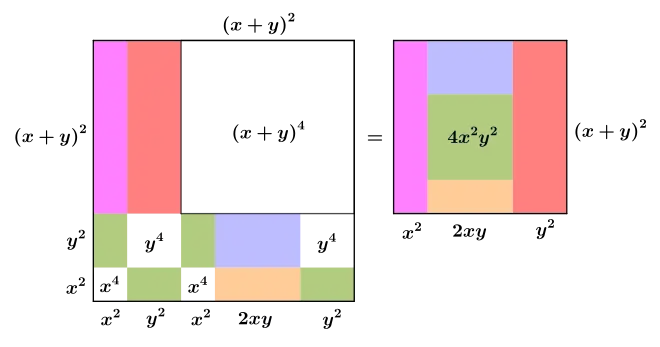
Candido's identity, named after the Italian mathematician Giacomo Candido, is an identity for real numbers. It states that for two arbitrary real numbers and the following equality holds:[2]
The identity however is not restricted to real numbers but holds in every commutative ring.[2]
Candido originally devised the identity to prove the following identity for Fibonacci numbers:[1]
Proof
A straightforward algebraic proof can be attained by simply completely expanding both sides of the equation. The identity however can also be interpreted geometrically. In this case it states that the area of square with side length equals twice the sum of areas of three squares with side lengths , and . This allows for the following proof due to Roger B. Nelsen:[3]

Further reading
- S. Melham: "'YE OLDE FIBONACCI CURIOSITY SHOPPE REVISITED". In: Fibonacci Quarterly, 2004, 2, pp. 155–160
- Zvonko Cerin: "ON CANDIDO LIKE IDENTITIES". In: Fibonacci Quarterly, Volume 55, No. 5, 2017, pp. 46–51
- Claudi Alsina, Roger B. Nelsen: "On Candido's Identity". In: Mathematics Magazine, Band 80, Nr. 3 (June, 2007), pp. 226-228 (JSTOR)
External links
- Candido's identity at cut-the-knot.org
References
- 1 2 Thomas Koshy: Fibonacci and Lucas Numbers with Applications. Wiley, 2001, ISBN 9781118031315, pp. 92, 299-300
- 1 2 Claudi Alsina, Roger B. Nelsen: "On Candido's Identity". In: Mathematics Magazine, Volume 80, no. 3 (June, 2007), pp. 226-228
- ↑ Roger B. Nelsen: Proof without Words: Candido's Identity. In: Mathematics Magazine, volume 78, no. 2 (April, 2005), p. 131 (JSTOR)